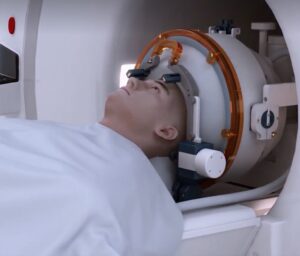8/27/24
My Progress
I finished applying the rotigotine patch a few days ago. I had worked up to 8 mg per day. It didn’t help. If anything, it seemed to make matters worse. I cut back to 4 mg and then stopped. Given these negative results, I had to decide what to do next. My neurologist recommended that I try going back to ropinirole. Perhaps, she suggested, I hadn’t given it enough time or reached a sufficient dose. So I started taking that medicine on August 21st. I’m currently up to 1 mg three times a day. I hope to increase to 3 mg three times a day in two weeks. However, again, to date I‘ve see no improvement.In fact, things seem to be much worse. I’m not sure what the next step should be.
In the next section, I’ll discuss, as promised, a technique for directly operating on brain tissue in an effort to alleviate some of the symptoms of Parkinson’s. Focused ultrasound is one of two such procedures. The other is deep brain stimulation (DBS). (I’ve taken some of this discussion from https://www.michaeljfox.org/news/focused-ultrasound)
Focused Ultrasound
Focused ultrasound and DBS are both surgical procedures that aim to ease Parkinson’s movement symptoms. They’re options for people who have tremors or slow movement that isn’t responding to medication.
Focused ultrasound and DBS work in the same general brain areas but in different ways. With focused ultrasound (FUS), doctors use ultrasound beams to destroy brain cells that cause movement problems. (It’s a bit like using a magnifying glass to focus sunlight rays on a leaf to burn a tiny hole.) The neurologists performing the procedure use MRI imaging to guide the ultrasound beams to tiny areas. Doctors target different brain cells to treat different symptoms.
DBS uses a more subtle approach. DBS delivers electrical pulses to similar regions to interrupt abnormal signaling. In DBS surgery, doctors insert thin wires into the brain and a battery below the collarbone.
The two procedures offer different advantages and disadvantages. Focused ultrasound is irreversible, while DBS may be reversed by removing the system or turning it off. Focused ultrasound is non-invasive — there are no incisions and there is no hardware placed in the body. Focused ultrasound is a one-time procedure that does not require adjustment. DBS needs regular programming to find the right electrical stimulation settings to maximize benefit and limit side effects.
During the focused ultrasound procedure, a patient is awake. No general anesthesia, surgical incisions or implanted hardware is involved. Doctors use MRI brain scans to direct ultrasound beams to the targeted brain location. (For tremor, it’s the thalamus and for other Parkinson’s motor symptoms, it’s the globus pallidus interna.) The photo below shows what the procedure looks like.

Focused ultrasound typically decreases symptoms immediately. It does not require adjustment, programming or additional procedures. But it is irreversible and permanent. Possible side effects may include headache, numbness and tingling, and imbalance or gait issues.
In 2018, the FDA approved focused ultrasound for Parkinson’s tremor. In 2021, the government expanded FDA approval to include other Parkinson’s symptoms, such as stiffness or bradykinesia (slow movement), as well as dyskinesia (uncontrolled, involuntary movement).
Currently, focused ultrasound is approved for treatment on only one side of the brain, meaning it can only alleviate symptoms on one side of the body. But ongoing research is evaluating the possible benefits and safety of both-sided focused ultrasound in different brain targets.
I have an appointment with my neurologist in a couple of weeks. I aim to ask her about the possibility of using this technique to help my condition.